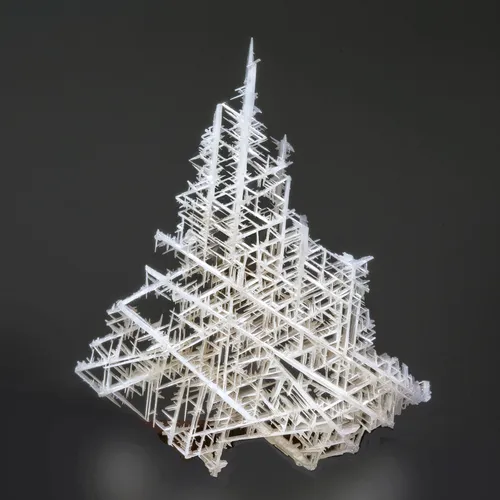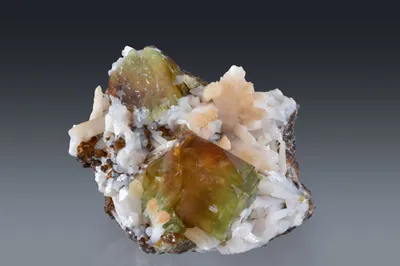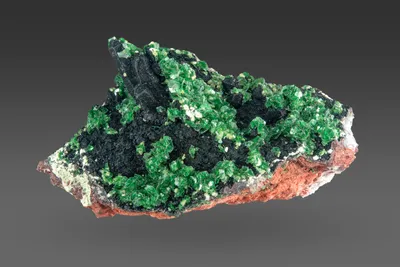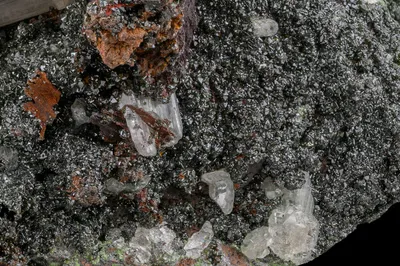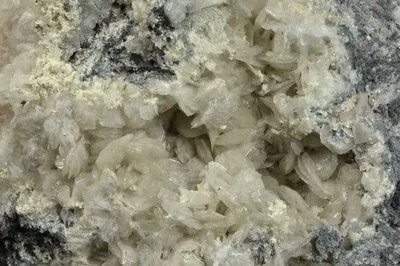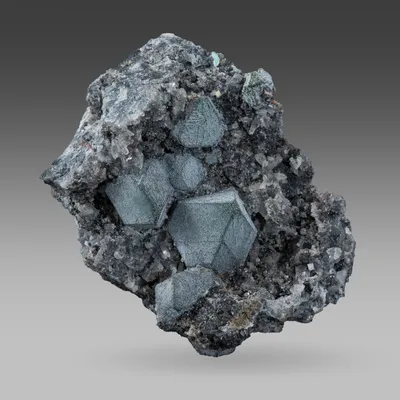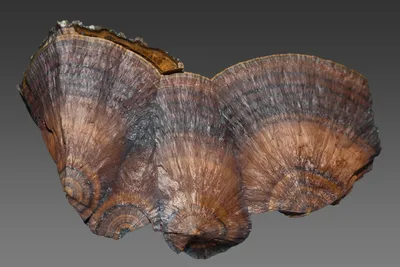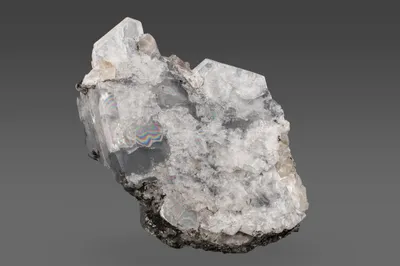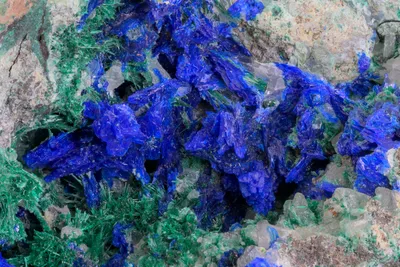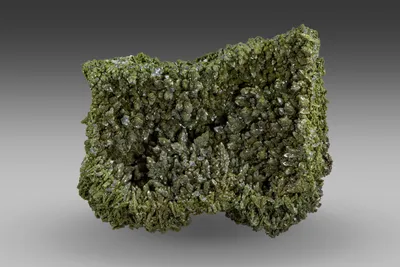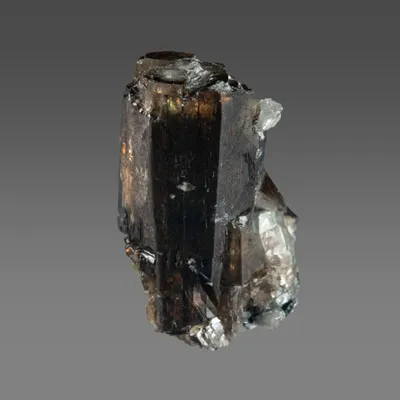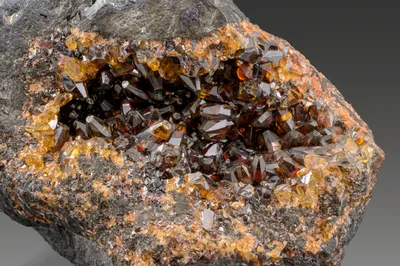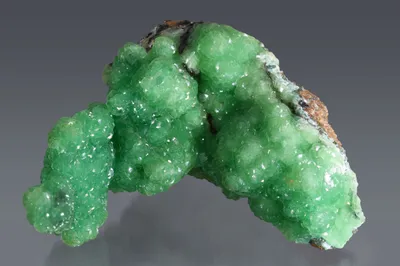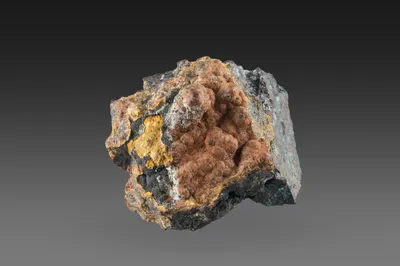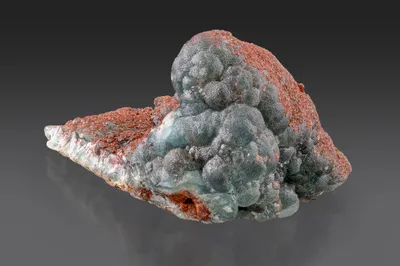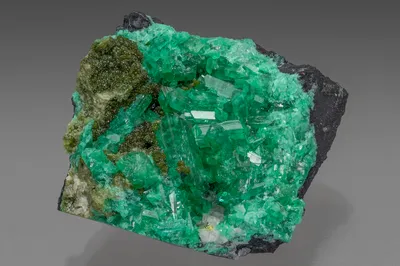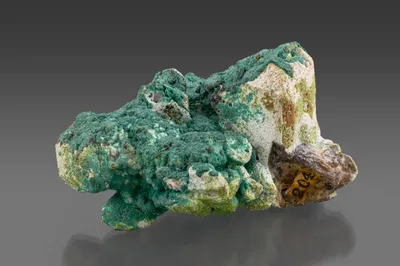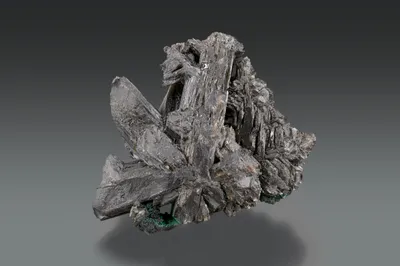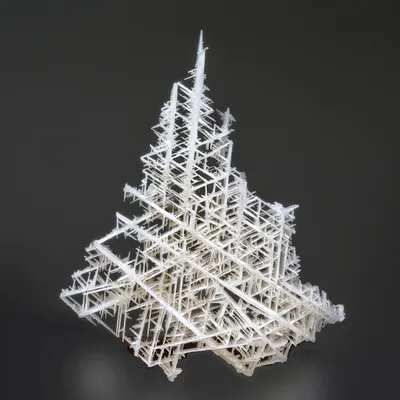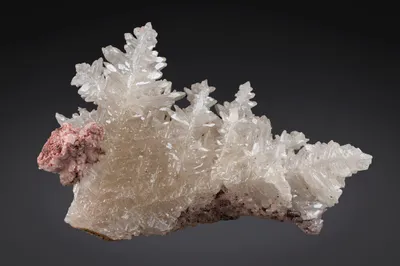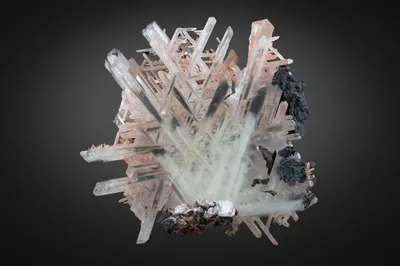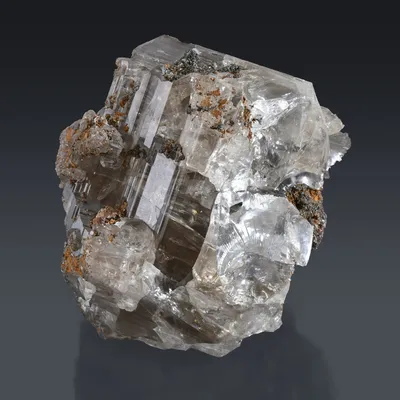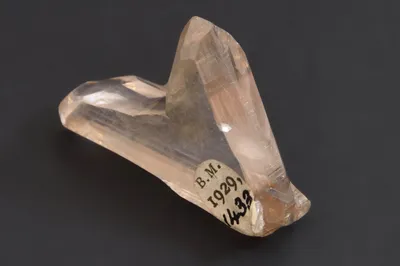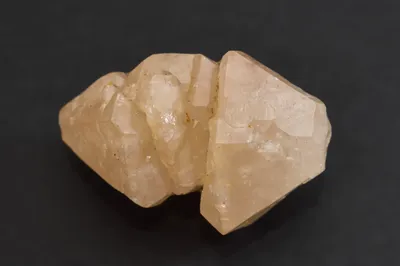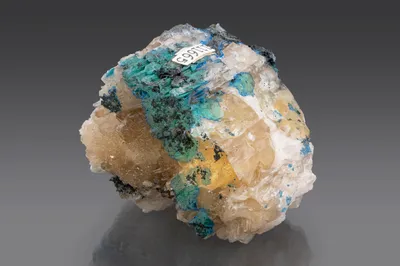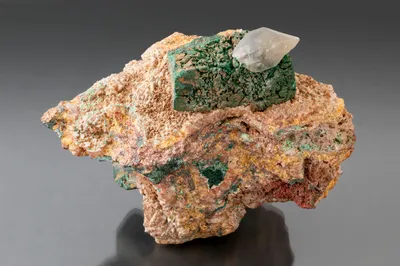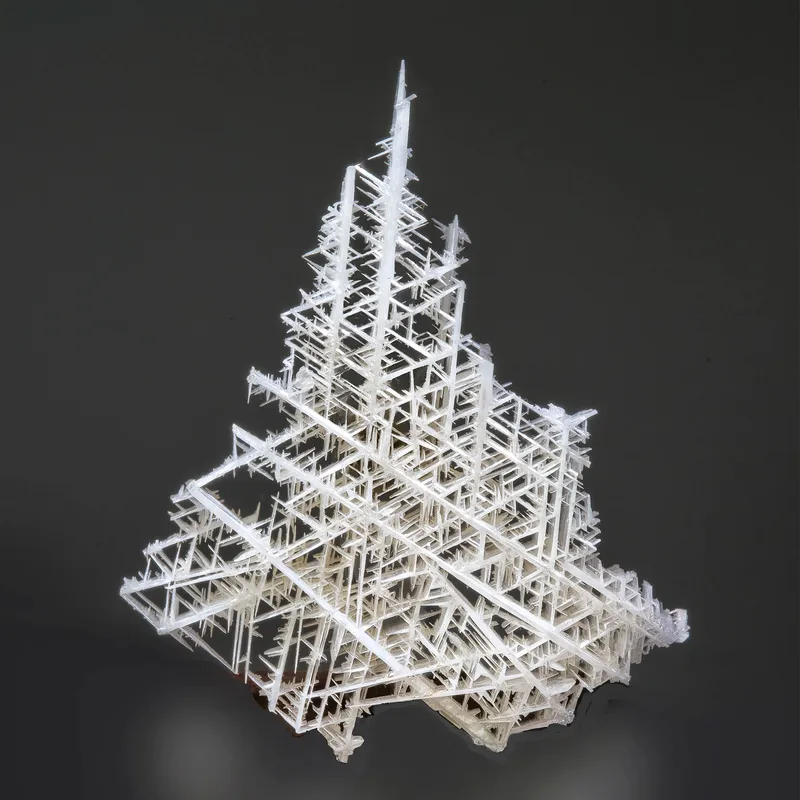
Image Credit: John Schneider
Mineral Species
Cerussite
Type Locality
No
Composition
PbCO3
Crystal System
Orthorhombic
Status at Tsumeb
Confirmed
Abundance
Very common
Distribution
First, second and third oxidation zones
Paragenesis
Supergene
Entry Number
Species; TSNB74
General Notes
Cerussite is by far the most abundant secondary lead mineral at Tsumeb (Keller 1977a), although much of it occurs in massive form. Cerussite was recognised from the earliest studies of the ore (Schneider 1906; Maucher 1908a,b) and described in considerable detail by Dübigk (1913).
Crystals to 600 mm are known. Most are twinned on (110). Sixlings and trillings are very common, and the reticulated "honeycomb" or "snowflake" habits of cerussite are the result of repeated twinning. Heart-shaped twins on (130) are very much rarer (Von Bezing et al. 2014).
Cerussite in massive form was commercially important in the earlier years of mining at Tsumeb, but well-formed crystals also occurred throughout the first oxidation zone, with the best examples occurring between 6 and 9 levels (from 150 m to 250 m below the surface; Klein 1938).
In the 1970s, fine cerussite crystals were found in abundance in the second oxidation zone and, notably, very fine reticulated groups were recovered from the manto ore bodies (Clive King, pers. comm. to M. Southwood 2013).
In the third oxidation zone, the so-called "Lead Pocket" on 43 Level was noted inter alia for hydrocerussite replacing cerussite crystals to varying degrees. Fine examples of red cerussite (coloured by inclusions of cuprite) were also recovered (separately) from these deepest workings (Gebhard, 1999).
In terms of colour, Tsumeb cerussite crystals are usually somewhere between colourless and milky-white; however, the minor presence of minute inclusions of relict sulphide (galena) can impart a yellow or brown "smoky" colour, while an abundant presence of sulphide inclusions can result in dark grey or even black cerussite crystals. Considerably rarer green or red cerussites result from the presence of malachite (Ruggiero 1977) or cuprite inclusions respectively.
Cerussite is a common mineral; assemblages rich in cerussite are numerous and the list of associated minerals is a long one. Cerussite is an important component of Keller's (1977a) "Type I" parageneses (i.e., mineral sequences forming at higher pH ranges). Keller notes the following sequences:
I/1: goethite >> duftite(i) >> cerussite >> duftite(ii) >> dolomite.
I/2: dundasite >> smithsonite(i) >> cerussite >> smithsonite(ii).
I/3: cerussite >> (duftite(i) + malachite) >> mimetite >> cerussite >> duftite(ii)
I/7: duftite >> dundasite >> cerussite >> azurite >> malachite (ps. azurite).
Keller also includes cerussite as a late-forming mineral in the following "rare mineral" paragenesis:
R/1: primary sulphides >> wulfenite >> alamosite >> kegelite >> leadhillite >> cerussite.
Gilg et al. (2003) used the oxygen isotope geothermometer to estimate that crystallisation temperatures for cerussite (and smithsonite) range from 30o to 50o C. They noted that these estimates are consistent with the homogenisation temperatures they obtained for two-phase fluid inclusions in wulfenite from Tsumeb.
Associated Minerals
adamite; alamosite; anglesite; antlerite (?); aragonite; arsentsumebite; azurite; bayldonite; berzelianite (?); bianchite (?); brochantite; brunogeierite; calcite; caledonite; chrysocolla; cinnabar; conichalcite; copper; cuprite; devilline; dioptase; dolomite; duftite; dundasite; edwardsite; feinglosite; ferrilotharmeyerite; fleischerite; fraipontite; galena; gartrellite; goethite; gunningite; hematite; hendricksite (?); hörnesite; hydrocerussite; itoite (?); kaolinite; kasolite; kegelite; köttigite; ktenasite; langite; larsenite; lauraniite; lazaridisite; leadhillite; linarite; litharge (?); malachite; massicot; matlockite (?); melanotekite; mendipite (?); mimetite; minium; minrecordite; molybdenite; molybdofornacite; mottramite; munakataite; niedermayrite; olivenite; olsacherite; otavite; parkinsonite; phosgenite; plancheite; plattnerite (?); plumbotsumite; posnjakite; pyrite; pyromorphite; quartz; rosasite; roxbyite; schulenbergite; scorodite; scotlandite (?); sepiolite; serpierite; siderite; smithsonite; sulphur; tennantite-(Zn); tsumcorite; tsumebite; voudourisite (?); willemite; wulfenite; zincolivenite; zincrosasite (?)
Pseudomorphs
Cerussite is reported to form pseudomorphs after the following minerals: anglesite (common); galena (rare); leadhillite (rare); mimetite (rare); phosgenite (rare).
The following minerals are reported to form pseudomorphs after cerussite: arsentsumebite (rare); calcite (rare); dolomite (rare); hydrocerussite (common); mimetite (rare); rosasite (rare); smithsonite (rare); willemite (rare).
